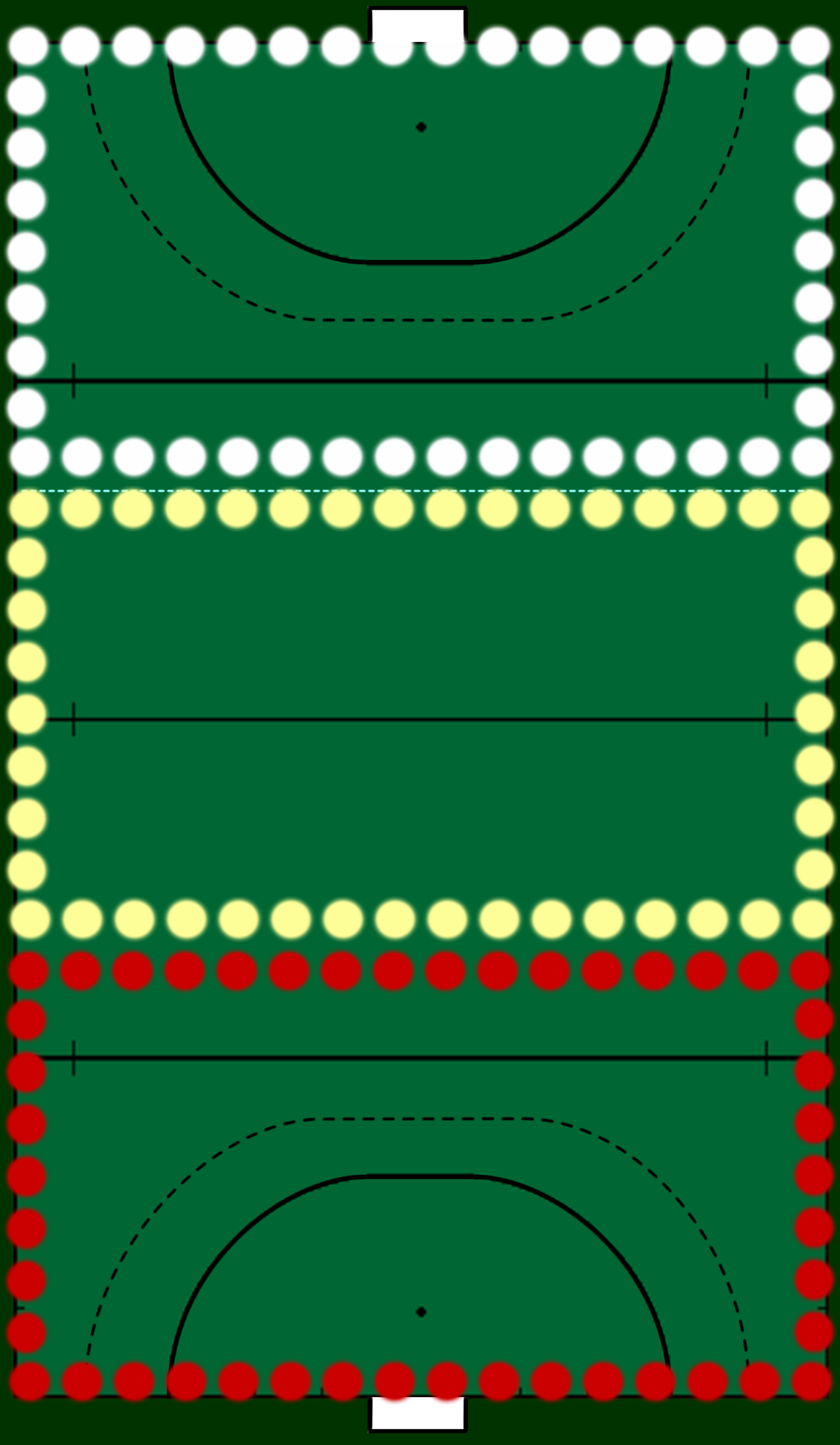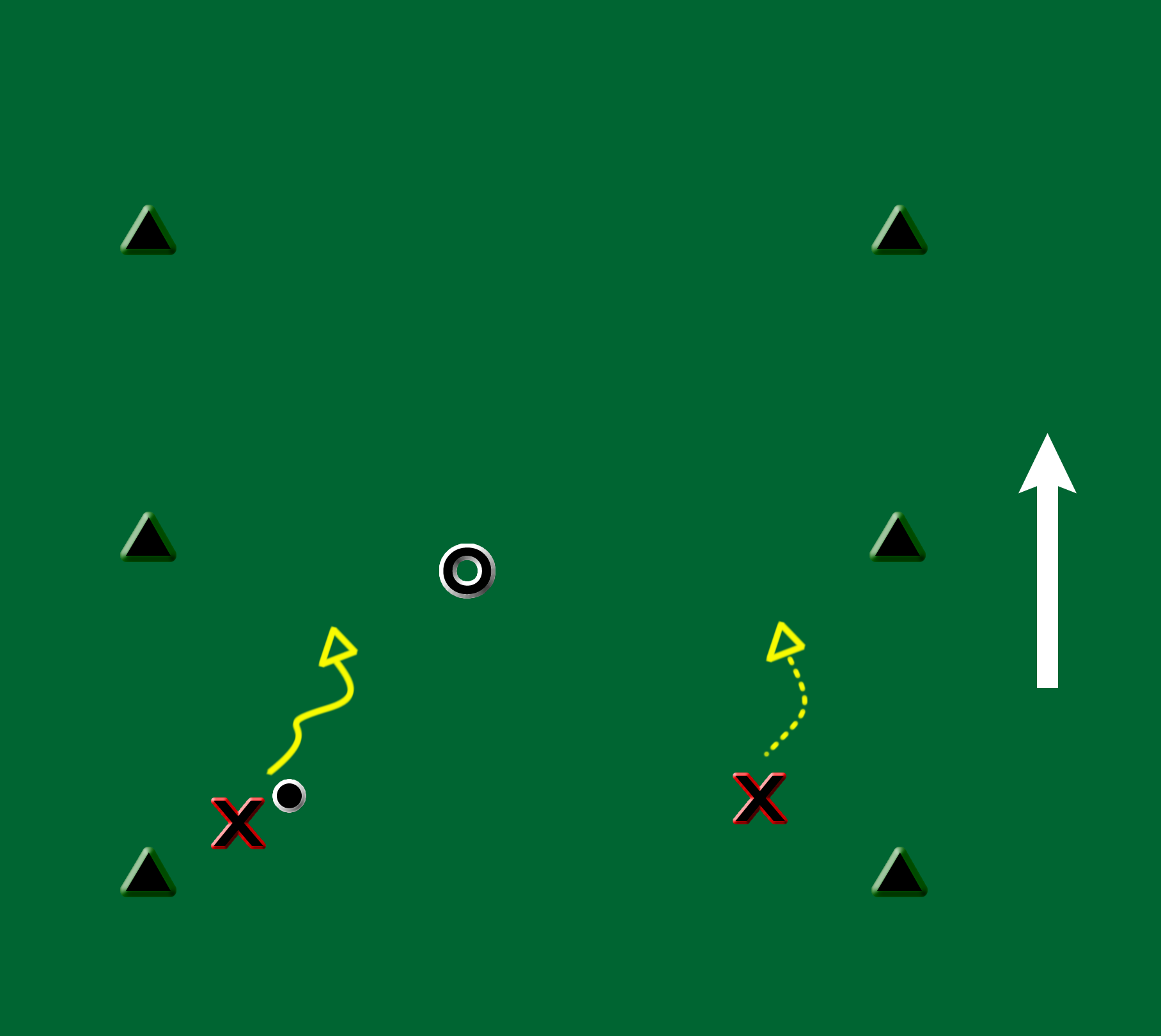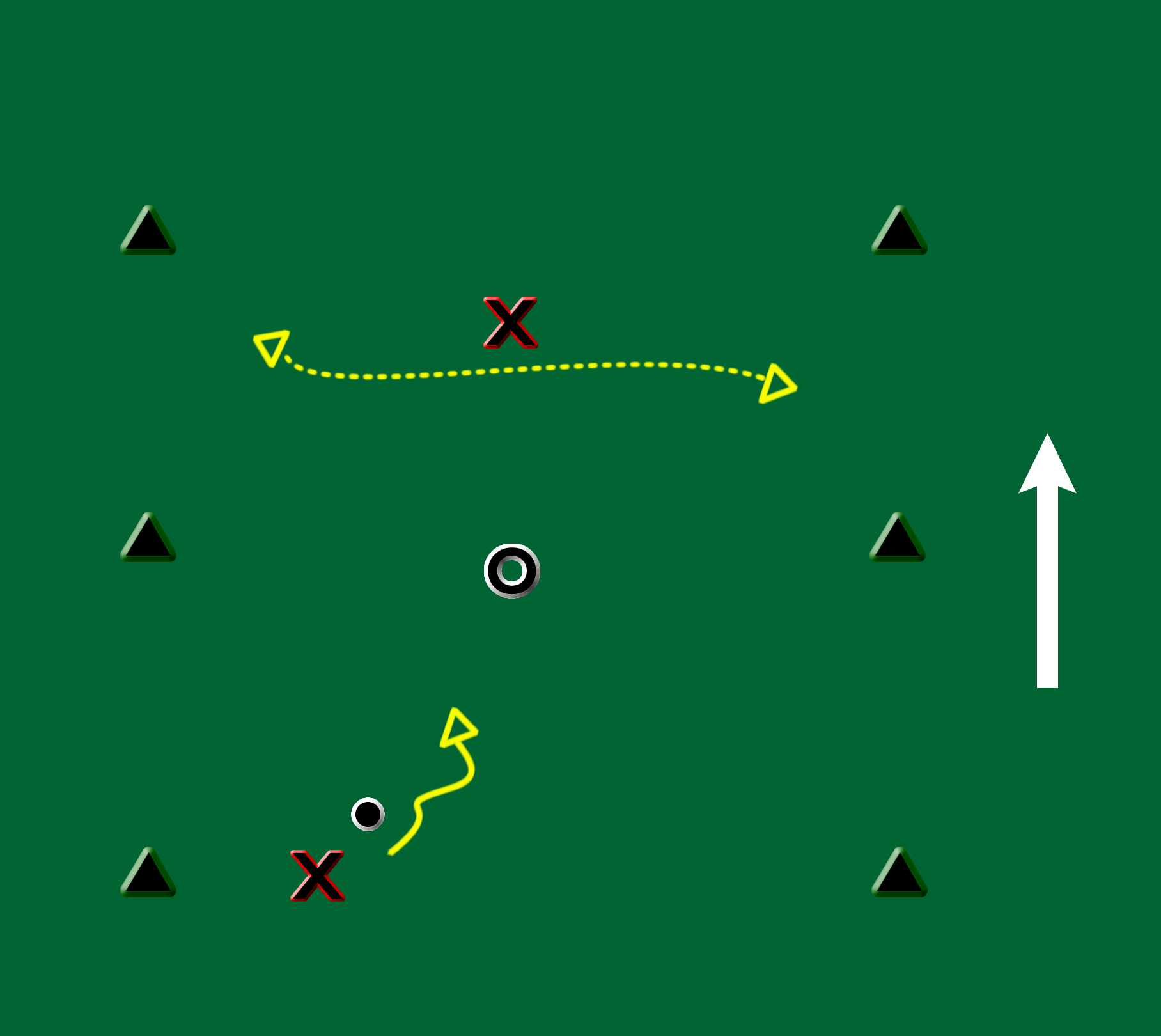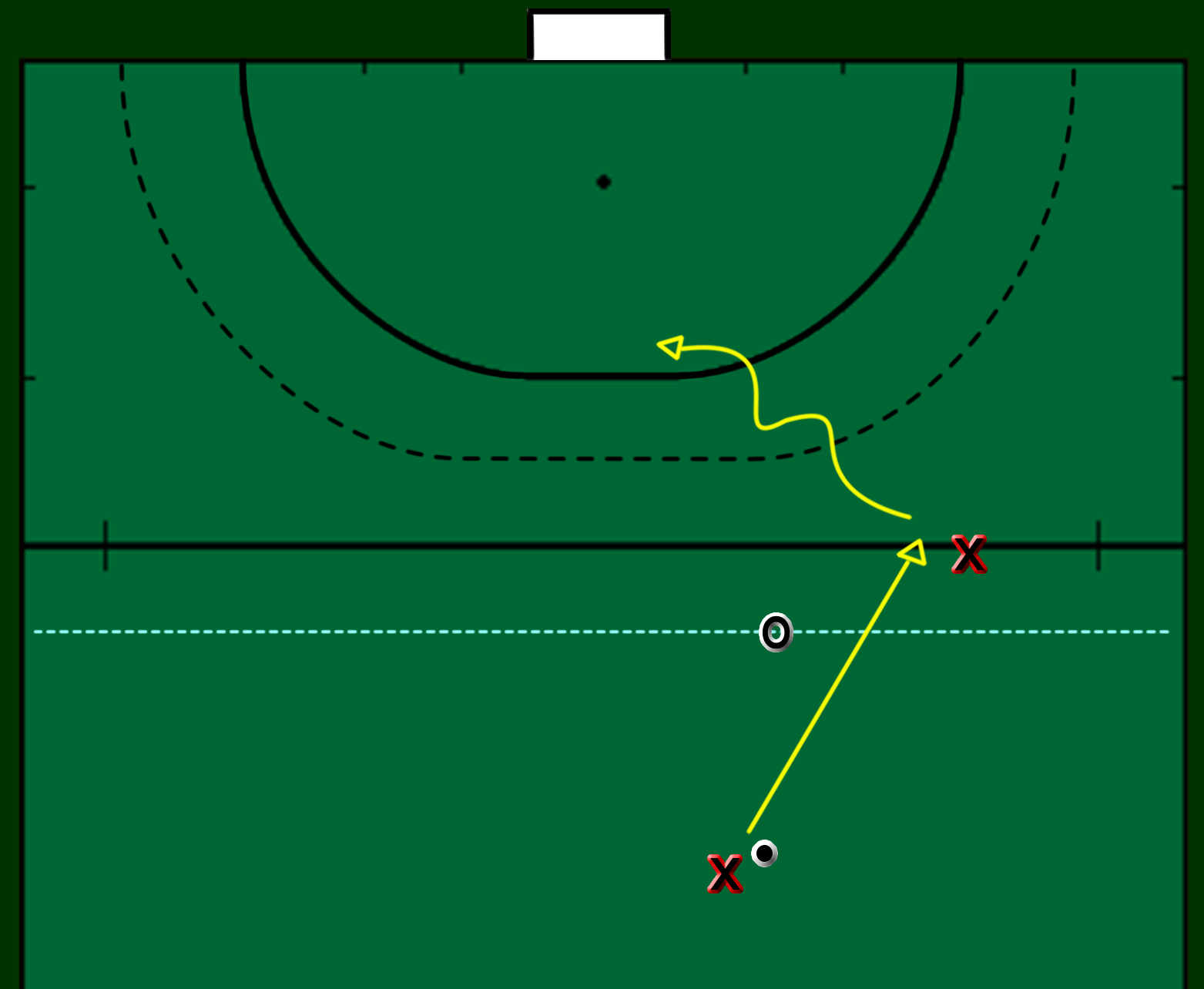AREAS OF THE GAME: ELIMINATION SKILLS
1-ON-1
Speed (change of speed and pure speed), stickhandling skills, change of direction, deception/feints: these are all skills that, if used at the right time and place, can help an attacking player to eliminate an opponent.
[See 1-on-1 Elimination/Attacking Drills]
Taking Risks
Reward vs Risk should be considered when a player is attempting to eliminate 1-on-1. Where do you get the biggest reward for eliminating a player? Where does it cost you if you lose the ball? Where should you focus on maintaining possession? For example, see the diagram as a guide to show players.
White dotted area: Elimination Zone
Low-risk area - be aggressive, take on the defender 1-on-1 frequently.
Yellow dotted area: Possession Zone
Medium-risk area - keep possession and look to eliminate 1-on-1 occasionally if the situation is right.
Red dotted area: Protection Zone
Low/No-risk area - keep ball protected in a strong position. Little/no 1-on-1 elimination. Look for high percentage passes to build possession into the midfield.

2-ON-1
The 2-on-1 situation is a central focus of effective attacking play. The 2-on-1 is a high percentage opportunity to eliminate a defender, and create a numerical advantage going forward. The team in possession should be looking to identify 2-on-1 situations on the field, and capitalize on them.
Keys to executing an effective 2-on-1:
Ball Position
Ball should be carried in an “option position” to allow vision, and allow the ball carrier to either pass or eliminate with the dribble.
Off-Ball Positioning
The off-ball attacker in a 2-on-1 should be in an attacking position off the line of the defender on either side. If possible, feet should be pointing forward to allow acceleration on the first touch reception. It is important that the off-ball attacker does not “hide” in the line behind the defender.
[See 2-on-1 Elimination/Attacking Drills]
Vertical vs Horizontal
During the game, 2-on-1 situations are created on many different angles, and should be practiced on different angles on the field. For basic training and coaching purposes, we can talk about Horizontal and Vertical 2-on-1 situations. The Horizontal 2-on-1 is when off-Ball attacker starts in front of the defender, and Vertical has the off-ball attacker starting in behind the defender. The concepts of Ball-Position and Off-Ball Movement apply to both situations.
Horizontal 2-on-1

Vertical 2-on-1

Advantage Line/Advantage Space:
Coaches can use the visual concepts of Advantage Line and Advantage Space to help players to understand off-ball positioning and movement. The Advantage Line is an imaginary line level with a defender. (See diagram). The space ahead of this line (closer to the attacking goal) is Advantage Space. If the attacking team can gain possession of the ball in this Space, the attacking team has an advantage.

Elimination Skills for LTHD Stages of Development
LEARNING TO TRAIN:
Skills: Push, Hit, Sweep, Reverse-Stick Hit/Sweep, Introduce Flick, Dribbling, Receiving, Leading
TRAINING TO TRAIN:
Develop LTT Skills, 3-D Dribbling Skills, Pull/Drag, Overhead/Aerial, Deceptive Passing, Reverse-Stick Receiving, Leading
TRAINING TO COMPETE:
Aerials on the Move, Passing at Speed, First-touch Elimination Receptions,
TRAINING TO WIN:
Perfect all skills to date.
[Elimination opportunities can also be created by playing the ball into a dangerous area where possession is contested, and positioning players in a manner that creates a high percentage that attacking possession will be retained. This topic will be covered in the Transition area.]

